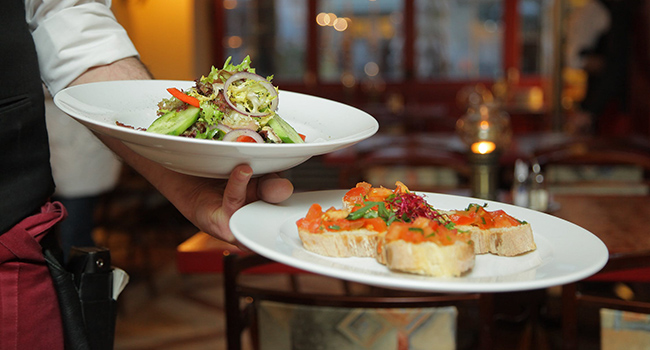 The best way to get an economy going again is to get to Canadians’ wallets by way of their stomachs. But it’s a long road.
The best way to get an economy going again is to get to Canadians’ wallets by way of their stomachs. But it’s a long road.
Up to 25 per cent of restaurants in Canada have closed for the season and perhaps for good. The Canadian Chamber of Commerce expects 60 per cent of restaurants to close permanently by November. Even if that forecast is a little extreme, fear of failure is surging for many establishments as summer ends.
According to Statistics Canada and others, revenues across the industry are at about 65 per cent of what they were pre-COVID-19.
The numbers show how resilient some of operators are. Many found great, innovative ways to bring food to our doors in lieu of just waiting for us to show up.
Since June, though, many of us have showed up. But the fall is now upon us and patio season is almost over in many parts of the country. Restaurant patios have expanded. Cities allowed for more flexibility, allowing patios in parking lots, sidewalks and streets.
Chances are we’ll see more patio heaters keeping patrons warm as operators try to extend the busy season the best they can. Unfortunately, that only goes so far in Canada.
Menus have offered fewer choices to patrons, while prices have risen to help operators make half-empty restaurants profitable. We’re clearly seeing signs of a very weakened industry.
Over the last few months, many meals served in the industry were actually ‘sponsored’ by major hospitality suppliers Sysco and Gordon Food Service. Many restaurants are taking 90 to 120 days to pay bills, and credit ratings are diving in the sector. At some point, more will close. Based on credit bureau information, approximately two out of every five meals are currently paid within 90 days by restaurants. Financial pressures are felt across the board.
Fear of COVID-19 is certainly one factor keeping people away from restaurants. According to a survey conducted in August, more than half of Canadians plan to return to restaurants after a second wave of the virus.
The economy is also problematic. Many people’s professional situations have changed since the start of COVID-19. Recent labour data shows that the Canadian economy is still a million jobs short of February statistics, prior to pandemic.
However, the scariest statistic has to do with telecommuting. Almost a quarter of Canadians are working for an employer who’s considering allowing more staff to work from home after the pandemic. We’re already seeing how this shift can be devastating to downtown cores across the country. People aren’t coming into work – they prefer to stay home and when we’re home, our behaviours toward food are very different.
Before the pandemic, approximately 38 per cent of our food budget was dedicated to food consumed outside the home. We’re likely at 25 per cent now, if not a little less. The bulk of our money is spent at the grocery store to get us busy in our kitchens. And chances are we’re not going back to 38 per cent any time soon. It will take years, not months, for things to return to ‘normal.’
The federal government’s reluctance to use the hospitality industry as a means to get our economy on a recovery path will likely continue.
But if we use restaurants and hotels as bait, consumers will buy more than just a meal or hotel stay. They’ll buy clothing and other goods, and use more services, boosting the overall economy.
New Brunswick is helping its hospitality industry recover by providing an incentive to citizens. The Explore NB Travel Incentive program was created to stimulate the tourism industry in the wake of the pandemic. It allows New Brunswickers to apply for a 20 per cent rebate on eligible expenses while taking a vacation. That includes paid overnight stays in the province between July and September.
It’s a brilliant move to support the tourism industry and the results are compelling: restaurants and hotels are busy.
However, neither the federal government nor other provinces have pursued such a program. Yet for the fall and the harsh winter ahead, the industry needs all the help it can get.
Hospitality has always been a challenging industry. In the best of times, 80 per cent of restaurants close within five years. COVID-19 has made things even more trying for the sector. The bloodbath we’re witnessing will only continue.
To the disappointment of many customers, across Canada some great culinary institutions have made their closures very public in recent weeks. Everything from cherished local restaurants to those run by immigrant families who have created jobs and expanded Canadian cuisine are closing their doors after years of business.
It’s heartbreaking. And it’s quite unfortunate that policy-makers aren’t taking notice of the losses in a sector that plays an important role in our economy.
Dr. Sylvain Charlebois is senior director of the agri-food analytics lab and a professor in food distribution and policy at Dalhousie University.
Sylvain is a Troy Media Thought Leader. Why aren’t you?
The views, opinions and positions expressed by columnists and contributors are the author’s alone. They do not inherently or expressly reflect the views, opinions and/or positions of our publication.


